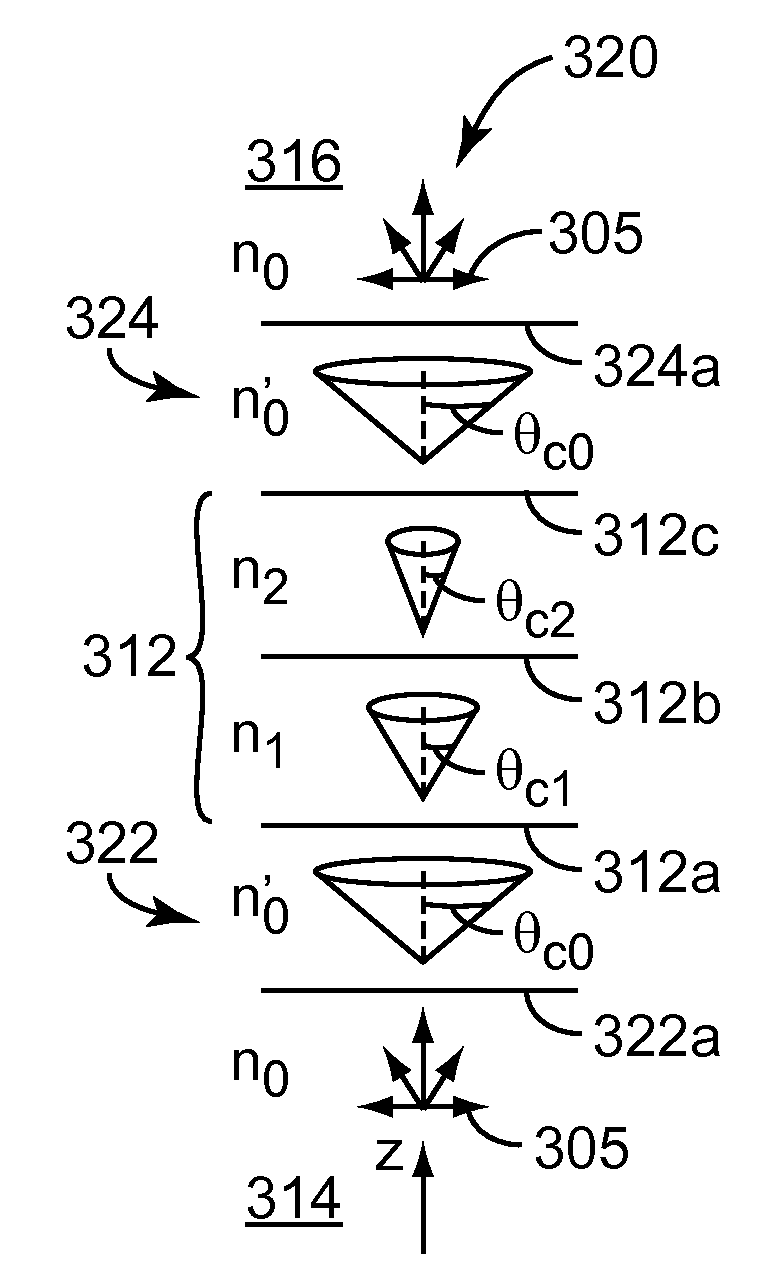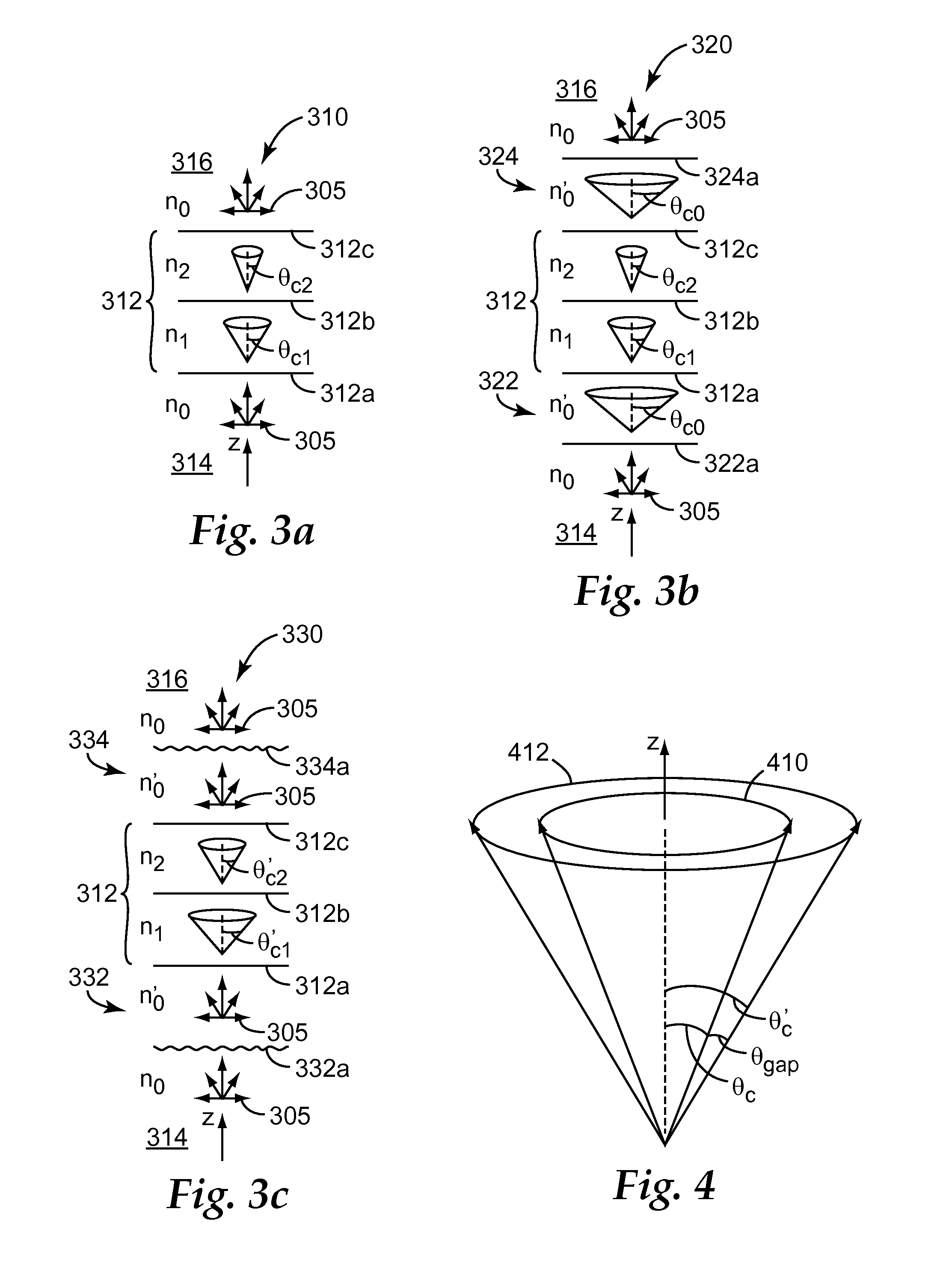Immersed reflective polarizer with high off-axis reflectivity
a reflective polarizer and high reflectivity technology, applied in the field of optical films, can solve the problem that the law of snell's law no longer operates to prevent the propagation of light through the film at supercritical, and achieve the effects of simplifying the manufacturing process, reducing inventory, and enhancing the brightness and contrast ratio of the display
- Summary
- Abstract
- Description
- Claims
- Application Information
AI Technical Summary
Benefits of technology
Problems solved by technology
Method used
Image
Examples
example nu-1
Immersed Film with No Ultra Low Index Layer
[0191]If the index set of the reflective polarizer is (nx=1.80, ny=1.67, nz=1.505) for the “high” index layers and n=1.585 for the “low” index layers, the right band edge for p-pol light does not drop below about 600 nm if the film is immersed in an index of 1.49. These film indices can be obtained with an asymmetrical biaxial orientation and heat setting of a PEN or a coPEN film having a very high PEN content, e.g. 95% PEN or greater. A ratio of orientation for the block axis to the pass axis direction can be about 2:1, although one can easily vary this ratio to optimize the nx vs. ny index. The low index material can be made using a blend of, e.g., PETg and a coPEN. All s-polarized visible light is reflected and p-polarized light below 650 nm is reflected at angles up to about 77 degrees.
[0192]Using the suggested indices and materials listed above for this example, a continuously graded stack of 550 alternating layers of the low and high ...
example nu-2
PETg / coPEN 90-10 Ultra Wide Band Polarizer
[0194]In order to demonstrate that an optical film can be made with the ultra wide bandwidths described in Example NU-1, and with an acceptable level of uniformity of transmission vs. wavelength over such a wide band, the following two films were made and then laminated with an optical adhesive. The first film reflects from about 400 nm to 900 nm and the second film reflects from about 800 nm to 1800 nm. The bandedges were designed to be gradual in order that the transitional overlap in the spectra from one film to the other in the laminate is relatively smooth. Both films were made using a feedblock method such as that described in U.S. Pat. No. 6,783,349 (Neavin et al.) with 275 alternating layers of a 90 / 10 coPEN (90% PEN / 10% PET) and PETg (available from Eastman Chemicals, Tennessee). The first film was optimized for uniformity of transmission and bandage slopes, with bandages of about 400 and 900 nm. The extrusion casting wheel was then...
PUM
 Login to View More
Login to View More Abstract
Description
Claims
Application Information
 Login to View More
Login to View More - R&D
- Intellectual Property
- Life Sciences
- Materials
- Tech Scout
- Unparalleled Data Quality
- Higher Quality Content
- 60% Fewer Hallucinations
Browse by: Latest US Patents, China's latest patents, Technical Efficacy Thesaurus, Application Domain, Technology Topic, Popular Technical Reports.
© 2025 PatSnap. All rights reserved.Legal|Privacy policy|Modern Slavery Act Transparency Statement|Sitemap|About US| Contact US: help@patsnap.com



